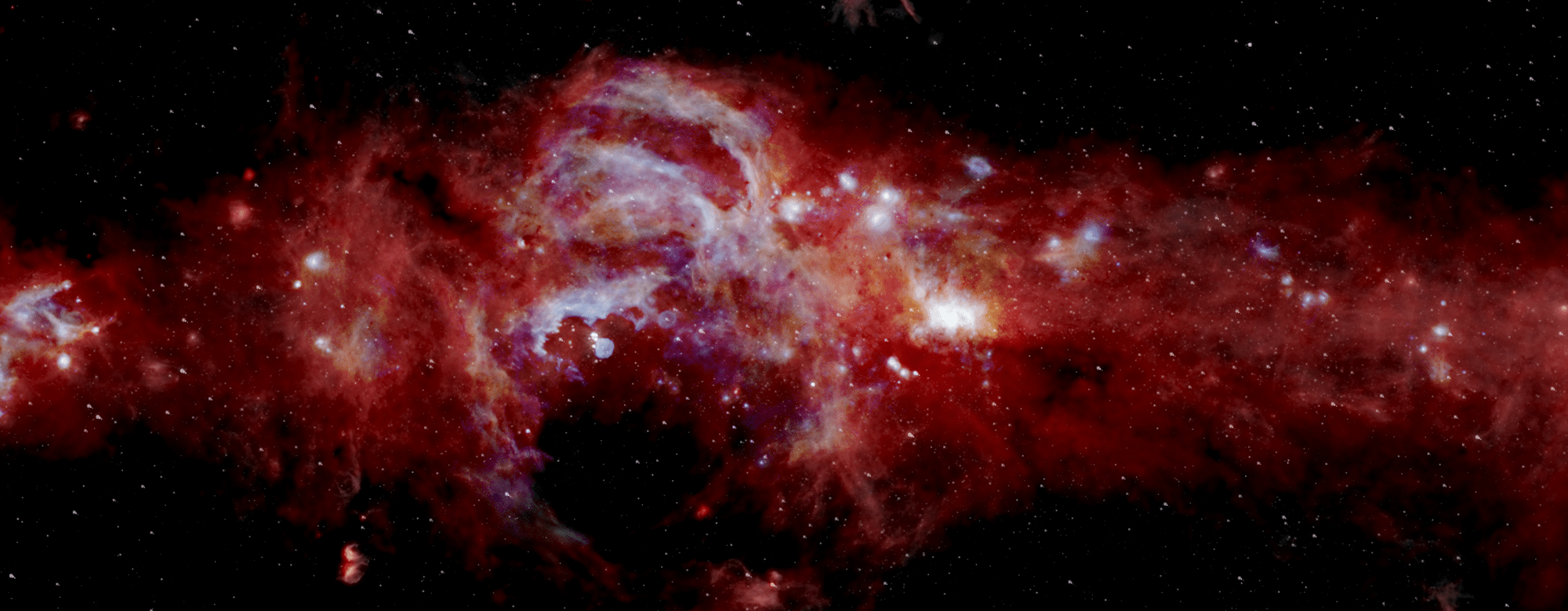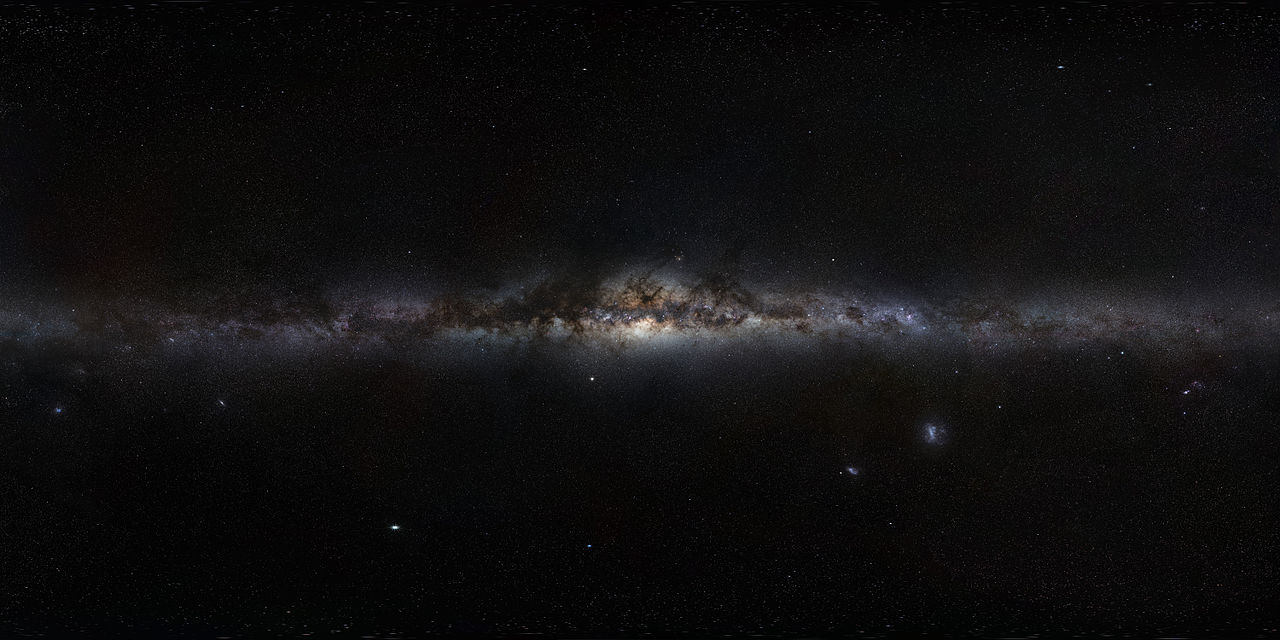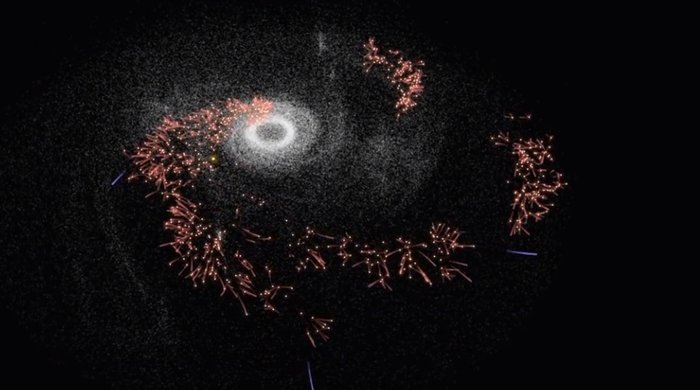The world’s largest airborne telescope, SOFIA, has peered into the core of the Milky Way and captured a crisp image of the region. With its ability to see in the infrared, SOFIA (Stratospheric Observatory For Infrared Astronomy) is able to observe the center of the Milky Way, a region dominated by dense clouds of gas and dust that block visible light. Those dense clouds are the stuff that stars are born from, and this latest image is part of the effort to understand how massive stars form.
Continue reading “This is the Core of the Milky Way, Seen in Infrared, Revealing Features Normally Hidden by Gas and Dust”100,000 Supernovae Exploded Near the Core of the Milky Way
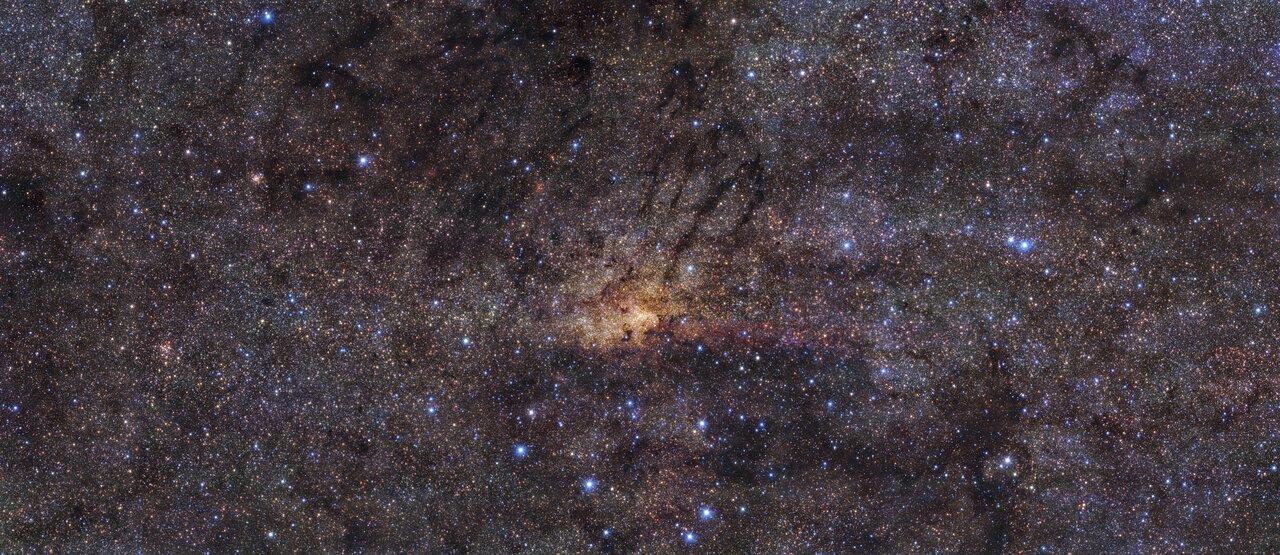
Thanks to the latest generation of sophisticated telescopes, astronomers are learning things a great deal about our Universe. The improved resolution and observational power of these instruments also allow astronomers to address previously unanswered questions. Many of these telescopes can be found in the Atacama Desert in Chile, where atmospheric interference is minimal and the cosmos can be seen with greater clarity.
It is here that the European Southern Observatory (ESO) maintains many observatories, not the least of which is the Paranal Observatory where the Very Large Telescope (VLT) resides. Recently, an international team of astronomers used the VLT to study the center of the Milky Way and observed evidence of ancient starbursts. These indicate that the central region of our galaxy experienced an intense period of star birth in the past.
Continue reading “100,000 Supernovae Exploded Near the Core of the Milky Way”This Galaxy Has Been Home to 5 Supernovae in the Last 20 Years

When stars die, they don’t die quietly but prefer to go out with a bang! This is known as a supernova, which occurs when a star has expended all of its fuel and undergoes gravitational collapse. In the process, the outer layers of the star will be blown off in a massive explosion visible from billions of light-years away. For decades, NASA has been monitoring galaxies beyond the Milky Way and detected numerous supernova taking place.
For instance, over the past 20 years, the Hubble Space Telescope has been monitoring the galaxy NGC 5468 – an intermediate spiral galaxy located roughly 130 million light-years from Earth in the constellation Virgo. In that time, this galaxy has experienced 5 supernovae and, thanks to its orientation (perpendicular to our own), astronomers have been able to study this galaxy and its supernovae in glorious detail.
Continue reading “This Galaxy Has Been Home to 5 Supernovae in the Last 20 Years”A New Way to Measure the Age of the Milky Way
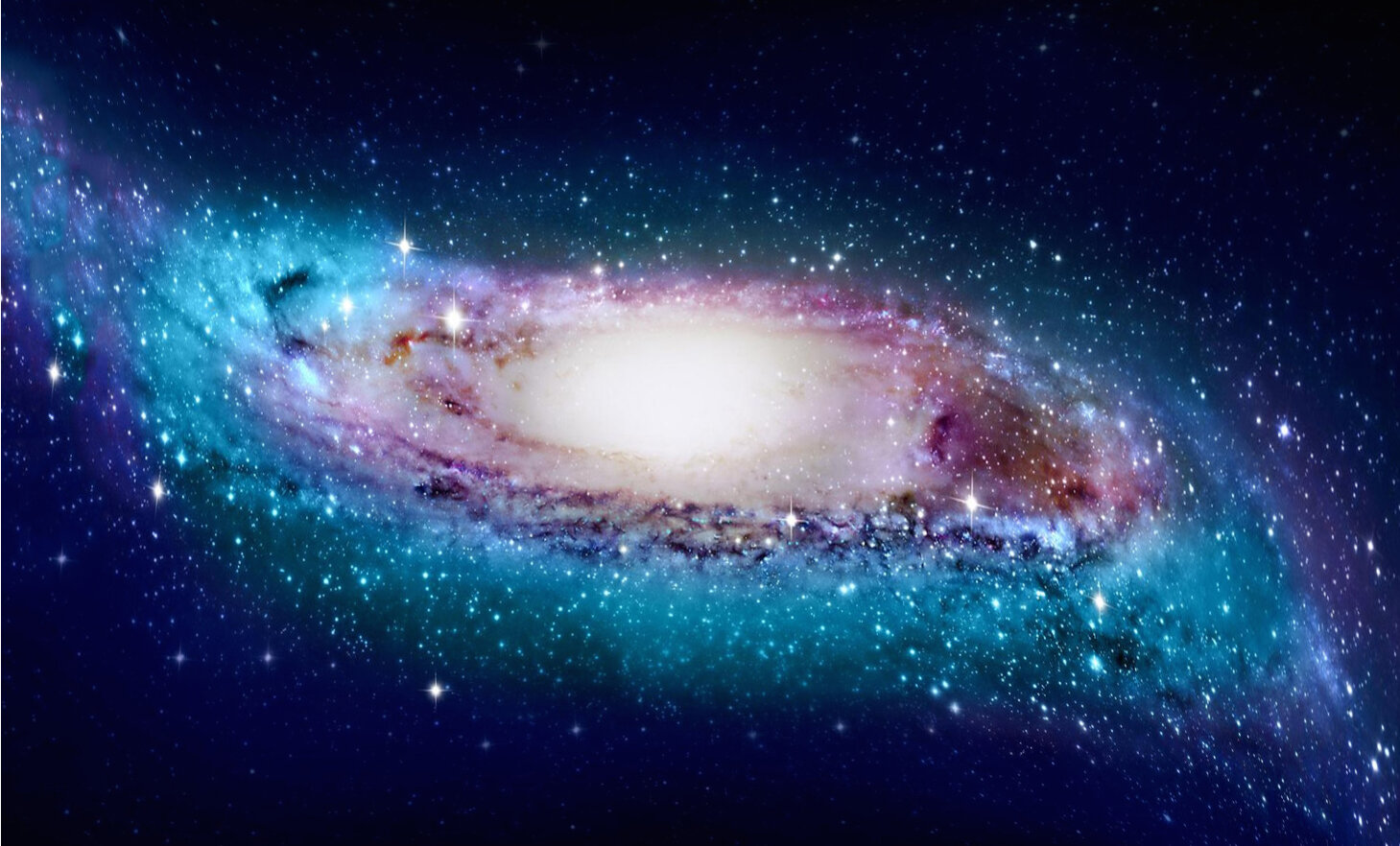
Like many other spiral galaxies in the Universe, the Milky Way Galaxy consists of two disk-like structures – the thin disk and the thick disk. The thick disk, which envelopes the thin disk, contains about 20% of the Milky Way’s stars and is thought to be the older of the pair based on the composition of its stars (which have greater metallicity) and its puffier nature.
However, in a recent study, a team of 38 scientists led by researchers from Australia’s ARC Centre of Excellence for All Sky Astrophysics in Three Dimensions (ASTRO-3D) used data from the now-retired Kepler mission to measure starquakes in the Milky Way’s disk. From this, they have revised the official estimates on the age of the Milky Way’s thick disk, which they conclude is around 10 billion years old.
Continue reading “A New Way to Measure the Age of the Milky Way”Earth, Solar System, Milky Way. Are they Getting More or Less Massive Over Time?
According to the most widely-accepted cosmological models, the first galaxies began to form between 13 and 14 billion years ago. Over the course of the next billion years, the cosmic structures we’ve all come to know emerged. These include things like galaxy clusters, superclusters, and filaments, but also galactic features like globular clusters, galactic bulges, and Supermassive Black Holes (SMBHs).
However, like living organisms, galaxies have continued to evolve ever since. In fact, over the course of their lifetimes, galaxies accrete and eject mass all the time. In a recent study, an international team of astronomers calculated the rate of inflow and outflow of material for the Milky Way. Then the good folks at astrobites gave it a good breakdown and showed just how relevant it is to our understanding of galactic formation and evolution.
Continue reading “Earth, Solar System, Milky Way. Are they Getting More or Less Massive Over Time?”Gaia Mission is Mapping Out the Bar at the Center of the Milky Way
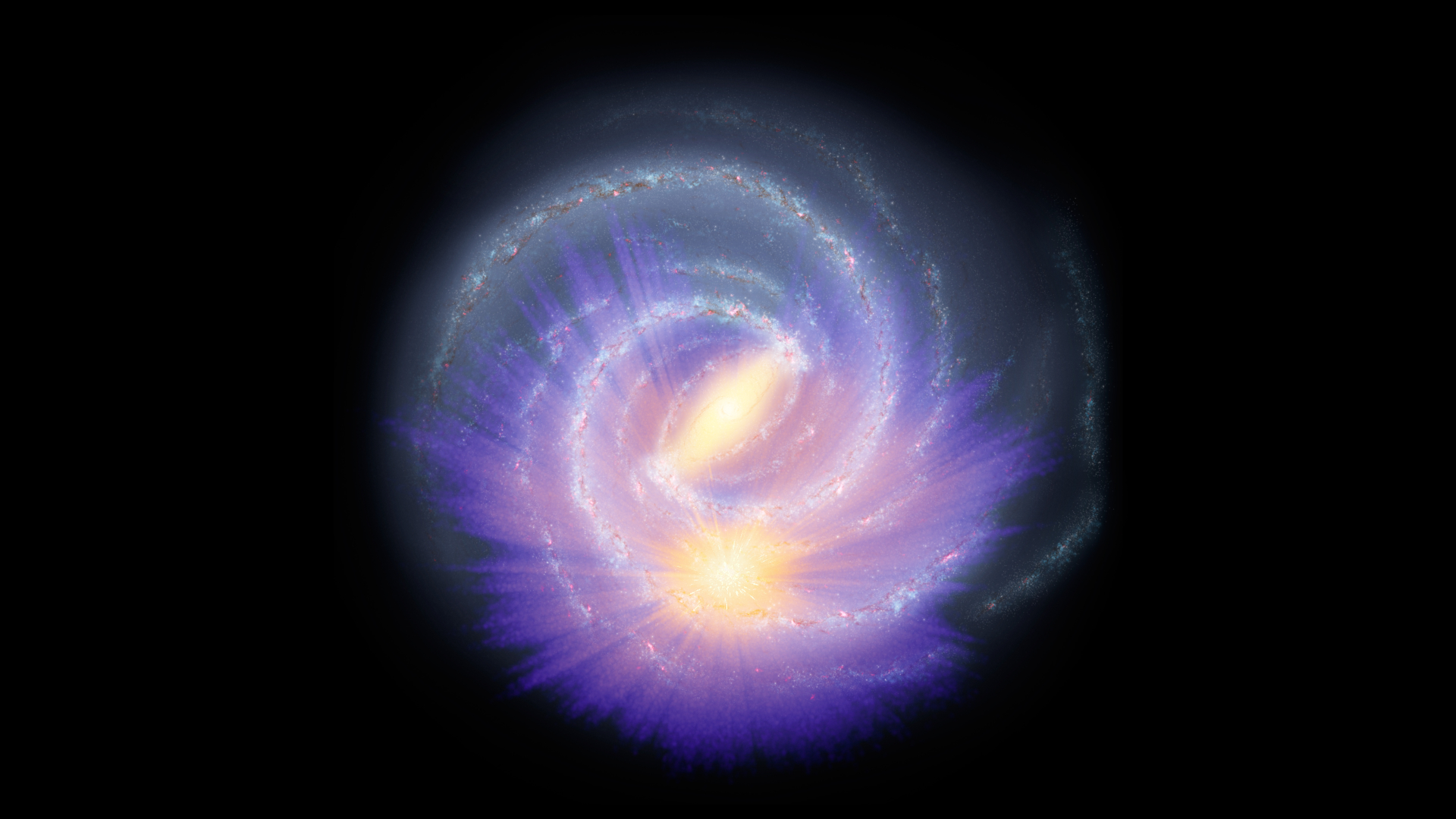
Despite the many advancements made in the field of astronomy, astronomers still struggle to get an accurate assessment of the Milky Way Galaxy. Because we are embedded in its disk, it is much more difficult to assess its size, structure, and extent – unlike galaxies located millions (or billions) of light-years away. Luckily, thanks to improved instruments and tireless efforts, progress
For instance, a team of astronomers recently combined the latest data obtained by the ESA’s Gaia observatory with the infrared and optical observations of other telescopes to start mapping the bar-shaped collection of stars at the center of our Milky Way. This constitutes the first time in history that astronomers have been able to make direct measurements of this barred structure.
Continue reading “Gaia Mission is Mapping Out the Bar at the Center of the Milky Way”The Most Efficient Way to Explore the Entire Milky Way, Star by Star
It seems like the stuff of dreams, the idea that humanity will one day venture beyond the Solar System and become an interstellar species. Who knows? Given enough time and the right technology (and assuming there’s not some serious competition), we might even be able to colonize the entire Milky Way galaxy someday. And while this seems like a far-off prospect at best, it makes sense to contemplate what a process like this would entail.
That’s what a think tank from the ESA’s Advanced Concepts Team (ACT) managed to do recently. As part of the tenth annual Global Trajectory Optimization Competition (GOTC X), they created a simulation that showed how humanity could optimally colonize the Milky Way. This was in keeping with the competition’s theme of “Settlers of the Galaxy“, which challenged teams to find the most energy-efficient way of settling as many star systems as possible.
Read morePerfect Example of a Barred Spiral Galaxy, Seen Face On. This is What Our Milky Way Might Look Like

The Hubble Space Telescope has given us a beautiful image of the barred spiral galaxy NGC 7773. This is a classic galaxy of this type, and highlights the bright bar of concentrated stars that anchors the galaxy’s stately spiral arms. It was captured with the Hubble’s workhorse Wide Field Camera 3 (WFC3.)
Continue reading “Perfect Example of a Barred Spiral Galaxy, Seen Face On. This is What Our Milky Way Might Look Like”Voyager and Pioneer’s Grand Tour of the Milky Way

During the early 1990s, NASA’s Pioneer 10 and 11 probes became the first robotic missions to venture beyond Neptune. In 2012 and 2018, the Voyager 1 and 2 missions went even farther by crossing the heliopause and entering interstellar space. Eventually, these probes may reach another star system, where their special cargo (the Pioneer Plaques and the Golden Records) could find their way into the hands of another species.
Which raises an important question: where might these spacecraft eventually wander? To address this, Coryn Bailer-Jones of the Max Planck Institute for Astronomy and Davide Farnocchia of NASA’s Jet Propulsion Laboratory recently conducted a study that examined which star systems the Voyager and Pioneer probes will likely encounter as they drift through the Milky Way over the next few million years…
Continue reading “Voyager and Pioneer’s Grand Tour of the Milky Way”Thanks to Gaia, We Now Know Exactly When We’ll be Colliding with Andromeda

Astronomers have known for some time that the Milky Way and the Andromeda galaxies will collide on some future date. The best guess for that rendezvous has been about 3.75 billion years from now. But now a new study based on Data Release 2 from the ESA’s Gaia mission is bringing some clarity to this future collision.
Continue reading “Thanks to Gaia, We Now Know Exactly When We’ll be Colliding with Andromeda”
